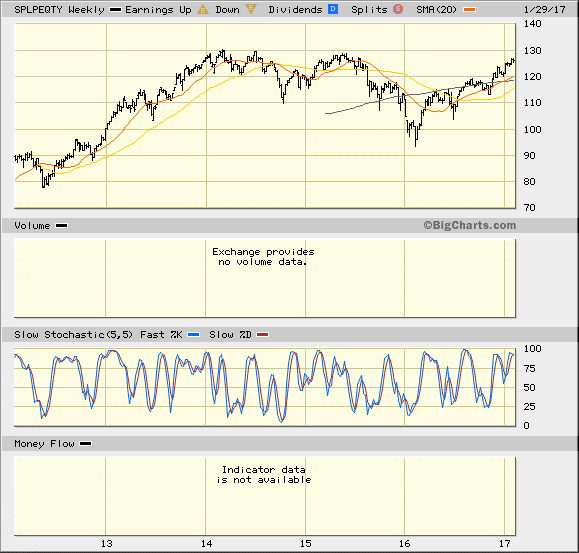Printing Money at Private Equity Firms
***Publisher’s note: A number of Dividend Investing Weekly subscribers did not receive last week’s e-letter due to a technical problem. This error has been fixed and will not affect your ability to receive Dividend Investing Weekly going forward. To view last week’s e-letter, please click here. ***
Coming into the New Year, I highlighted private equity firms as a 2017 investment theme that I felt had a strong chance to outperform the market and most sectors.
It just seemed natural that these high-profile, quasi-banks that have many tentacles of revenue generation would have their day in the sun when the business conditions for monetizing portfolio assets improved. As it stands, the landscape for most business sub-sectors of these publicly traded partnerships improved in the fourth quarter of 2016 and that momentum is picking up speed in the first quarter of 2017.
With the stock market reaching new all-time highs, fueled by improving earnings, ongoing stock repurchases and a good dose of merger and acquisition activity, a few big ticket initial public offerings (IPOs) are finding their way into the welcome arms of buyers. Most recently, Blackstone Group LP (BX) listed Invitation Homes (INVH) as an initial public offering. The deal raised $1.54 billion in the largest residential REIT offering since Paramount Group Inc.’s $2.29 billion IPO in 2014. At the same time, Blackstone maintained its 73% stake in the company. And Apollo Global Management LLC (APO) raised $1.1 billion from its IPO of annuity seller Athene (ATH) in December to rank as the second-biggest company to debut in 2016.
The deals, along with strong showings in all of their lines of business, greased the Q4 earnings for Blackstone and Apollo as each company beat Wall Street forecasts for top- and bottom-line results to send their respective stock prices to new 52-week highs. At the same time, both companies declared sizable quarterly cash distributions, further rewarding shareholders. Blackstone will pay out a 47-cent distribution, putting its current yield at 6.2%, while Apollo declared a 45-cent payout that produces a current yield of 8.2%.
Typically, these firms reserve their larger quarterly payouts for the second half of the year. Because they are structured as partnerships, the quarterly distributions will vary, sometimes widely. But with what could be a big year ahead for private equity firms to “exit” portfolio holdings profitably, the run in these stocks likely has just begun.
And the party doesn’t end with these two sector leaders, as measured by market cap. At Cash Machine, I recently added a third name in the private equity space that pays an outsized current yield of 11.7% and its leaders publicly stated they are comfortable with the current distribution policy. That should be music to every income investor’s ears when hunting for high-yield stocks that stand to benefit from rising inflation, increasing deal flow in a market with a growing appetite for IPOs, spin-offs, mergers and harvesting gains from private sales of assets. For details about what my Cash Machine newsletter offers, please click here.
Not surprisingly, it is a very exciting time to be involved in the private equity sector where the fundamentals are strengthening much faster than at commercial banks. And though interest rates have edged higher, the cost of capital remains relatively cheap, giving private equity firms very attractive terms for financing acquisition of new assets.
The one-year annual return for the S&P Listed Private Equity Index (SPLPEQTY) is 24.75%, or roughly twice the return of the S&P 500. From the five-year chart below, it is clear the sector is just now getting back to levels not seen since mid-2015 when the IPO market all but dried up with the massive correction in energy, commodities, European banks and distressed debt markets. Those markets have enjoyed varying levels of recovery. Private equity firms and the markets in which they navigate generally are non-liquid or devoid of exchanges.
What’s nice about the private equity sector is that for the many publicly traded companies and other specialty finance companies that I track in that arena, yields range from 3.6% to 11.7%. The sector also could be a huge beneficiary of financial deregulation and the pro-business stance advocated by President Trump. “The Art of the Deal” describes succinctly how these companies operate. When you have two of the smartest guys in the room, Leon Black for Apollo and Steve Schwarzman for Blackstone, managing very sophisticated enterprises where the price of entry used to be reserved solely for the ultra-rich, it should be obvious to investors that at some point it makes sense to invest alongside these and other nimble private equity companies. Indeed, all of these stocks seem to be on the rise.
In case you missed it, I encourage you to read my e-letter article from last week about how global manufacturing improvements are benefiting large economies.


